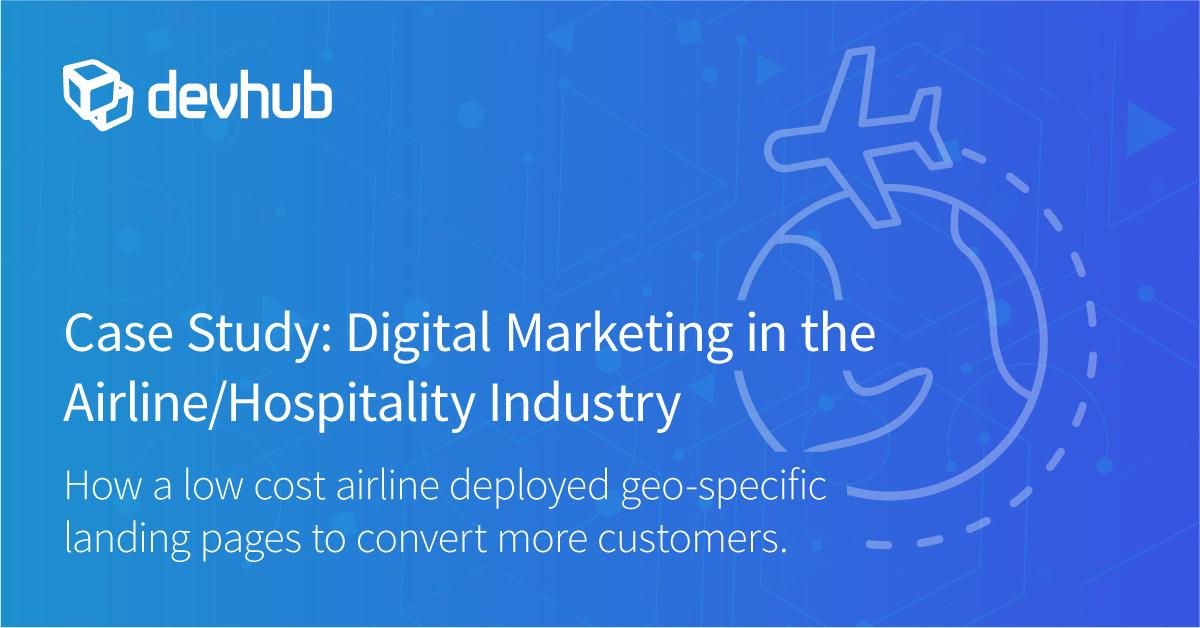
How a low cost airline deployed geo-specific landing pages to convert more customers.
Airline Industry Overview
The air travel industry continues to grow. The International Air Transport Association (IATA) reported a record-breaking 4.1 billion passengers flew in 2017.
Low Cost Airline Overview
Over the past 20+ years the rise of low-cost carriers (LCC) have been slowly threatening their traditional counterparts - scheduled airlines. As low-cost carriers expand beyond short-haul routes they compete more heavily with the bigger digital marketing budgets of scheduled airlines.
Low-cost carriers focus on reducing costs by offering a la cart services i.e. charging for seat reservations, luggage and/or in flight meals and entertainment. Some Low-cost carriers use secondary airports and operate single aisle airplanes. Popular LCC airlines are: Southwest, Ryanair, Easyjet, AirAsia, LionAir, JetBlue, Norwegian, Vueling, WestJet, Allegiant, Spirit and Flair Air to name a few.
Objectives
-
Deploy multiple geo-specific landing pages
-
Increase organic long tail traffic
-
Convert paid search traffic while optimizing quality scores
Scaling Landing Pages via Google Sheets
35 Landing pages were created in total. Each landing page representing a unique flight path/ destination. Behind each landing page - embedded analytics (Mixpanel) and the use of relevant geo-specific content (Crowdcontent) were deployed.
Once the master template was set (via RallyMind) - the ability to safely and easily add a new landing page by adding a new row to the shared Google Sheet cut production time by 90%.
As part of the on-boarding process; integration with the client side API for dynamic data (in this case flight costs) were completed. This allowed each destination page to have relevant flight pricing that created more targeted actions a consumer could take based on date/ cost of flight.
To deploy airline specific landing pages that received targeted paid traffic and rank organically for long tail search - We added dynamic content and links. This made the consumer experience more meaningful.
- Local weather widgets
- Links to local attractions and events web pages
- Clickable elements displaying quotes for relevant flight costs and destinations
- Newsletter subscription form inside landing page for customer registration
- Integration of searchable flight and trip information via query boxes
- Ability for customers to input promo codes.
Results - Dynamic landing pages increased organic SEO footprint and conversions on paid search traffic
Statistics in a period of 30 days for organic Google traffic includes:
-
Site page view count of 2030 views
-
Non organic 34,828 site page views total for all pages across all referrers
-
The top landing page is flights from Edmonton to Abbotsford with a total of 477 organic site page views from Google.
-
The page with the second most traffic is Edmonton to Victoria, totaling 458 organic site page views from Google.
-
Edmonton was the top city for origin of site page views with 435 views.
-
Winnipeg was the second highest city for site page views, with 223 views. From June to Nov the organic google traffic for FlairAir’s landing pages total views is 6,876.
Suggestion:
Create more unique and dynamic pages to go above and beyond in steering more targeted traffic
-
Long tail SEO method is still working well. The airline could make more landing pages for events in the geographic areas they serve.
-
Create landing pages for promotions the airline is running.
-
Build out microsites with the current geo-specific landing pages. This is easily accomplished via a micro-site platform. By adding another layer (pages) behind the initial landing page i.e.
Weather in Edmonton (click on weather) - generating content pages for what to wear and more weather info for 7, 15, 30 day forecast
Things to Do - Where to Eat, Where to Shop, Where to Stay
Utilizing the Dynamic Pricing Data Feeds For content related to Events during the time of travel and Hotel recommendations
***In conclusion - the added benefit of have having SEO optimized pages with a solid mix of paid media (SEM) - will result in increased traffic and conversions over time. The investment up front is anywhere between 3 to 6 months for the SEO benefit (Google permitting). As long as the experience is relevant to the searcher - these pages can have a long life in sustainable SEO.